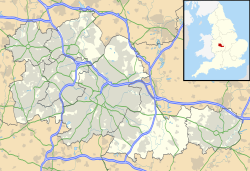| St George's Barracks | |
|---|---|
| Sutton Coldfield | |
 Main gate at St George's House, Sutton Coldfield | |
| Site information | |
| Type | Barracks |
| Owner | Ministry of Defence |
| Operator | |
| Location | |
| Coordinates | 52°34′09″N01°47′51″W / 52.56917°N 1.79750°W |
| Site history | |
| Built | 1960 |
| Built for | War Office |
| In use | 1960–c.2000 |
St George's Barracks, Sutton Coldfield was a military installation in Sutton Coldfield.
